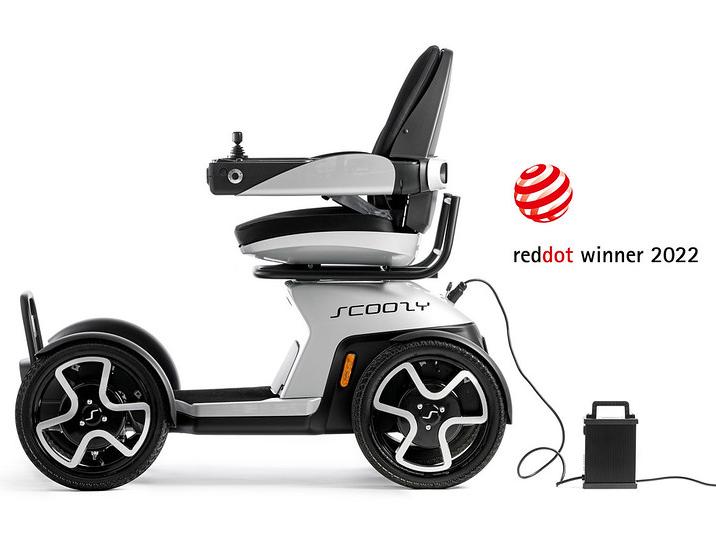STERLING S800 BY SCOOZY
OUTDOOR SCOOTMOBIEL
De Scoozy S is dé outdoor scootmobiel, ontworpen voor degenen die niet meer kunnen wandelen of fietsen door pijn of vermoeidheid. De S800 biedt vertrouwde bedieningselementen van de fiets met een knijprem en unieke voetruimte onder de stuurkolom, waardoor het mogelijk is om comfortabele ritten op elk terrein te genieten, met de beste vering en ergonomische zithouding.


SCOOZY C
SCOOTMOBIEL MET JOYSTICK
Ervaar ontspannen sturen met de Scoozy C, dé scootmobiel met joystick. Dankzij de moeiteloze bediening geniet je van een zorgeloze rit, ideaal voor wie kampt met pijnklachten in schouders en armen of eenzijdige verlamming. Voor avonturiers die graag over onverharde paden cruisen, lange afstanden afleggen en hogere snelheden willen bereiken dan met een elektrische rolstoel. Het open ontwerp zorgt voor veel beenruimte, waardoor je comfortabel en vrij kunt bewegen.
RIJDEN MET EEN LACH
WAAR JE WIL
Rij met de Scoozy scootmobiel met 4 grote wielen comfortabel over elke oneffen ondergronden: Een klinkerweg in de stad of een onverhard bospad is geen enkel probleem. Kom op plekken waar je met de fiets of auto niet kunt komen: Rij door de winkelstraat, bezoek jouw favoriete museum en geniet van de allermooiste routes in de natuur.

ZO VER JE WIL
De geavanceerde Li-ion batterijtechnologie zorgt ervoor dat je kunt blijven rijden zo ver als je wilt, zonder je zorgen te maken over opladen. Bezoek vrienden in het dorp verderop of maak een roadtrip. Voel je met de Scoozy scootmobiel met grote actieradius vrij en verleg je grenzen!

HOE JE WIL
Scoozy biedt een ongeëvenaarde rijervaring door functionaliteit naadloos te combineren met stijl. Bij de moderne scootmobiel Scoozy staat jouw veiligheid centraal in het ontwerp. De intuïtieve bediening en een optimale ergonomische zitpostitie geven je het zelfvertrouwen om volop te genieten van een actieve levensstijl.

UPDATES
NIEUWS EN BLOGS
Vind het antwoord op de meest gestelde vragen over Scoozy, lees verhalen van klanten, nieuwsberichten
en algemene informatie over scootmobielen.
SCOOTMOBIEL SCOOZY
IN DE MEDIA

DUTCH DESIGN
OVER ONS
Bij Scoozy geloven wij in een toekomst waar mobiliteit geen hindernis vormt, maar een bron van vreugde is voor iedereen. Onze roots liggen in de Nuon Solar Challenge, waar onze liefde voor elektrisch rijden begon. Deze passie is uitgegroeid tot een missie om de wereld van scootmobielen te transformeren met innovatie!
MAAK EEN PROEFRIT
ERVAAR SCOOZY ZÉLF
Maak nu een proefrit en ervaar zelf hoe gaaf het is om met Scoozy te rijden! Bezoek een dealer of neem een kijkje in onze fabriek.






